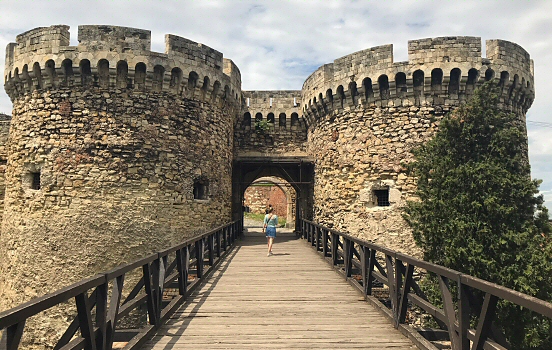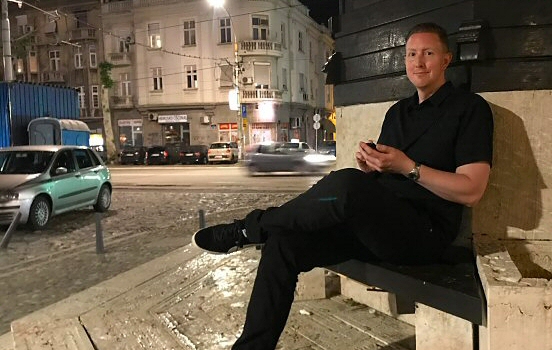I was curious to what I would find in Serbia. For obvious reasons, many of the surrounding countries are vary of Serbia, to say the least. When I was visiting Bosnia-Herzegovina some years ago, the locals all but spat every time I happened to mention the country.
The Yugoslav Wars were indeed horrible, but Serbia has seen much more conflict during the centuries. Being one of the oldest cities in Europe with a strategic location at the confluence of the Sava and Danube rivers, Belgrade has been fought over in 115 wars and razed 44 times.
This is a city that’s been punched in the gut more times than you can count, by empires, by wars, by history itself. Romans, Huns, Goths (early ancestors of Robert Smith), Ottomans, Habsburgs, Nazis, Red Army, NATO bombs — pick an era, pick a villain. Everyone wanted a piece of Belgrade, and they usually left behind a crater or two.
But Belgrade is still here.
 Zindan Gate to Kalemegdan fortress.
Zindan Gate to Kalemegdan fortress.
Some parts of the city still cling to the past. The Kalemegdan fortress stands in silent vigil where the rivers Sava and Danube meet. Since the fortress looked white from the river, the city was once given the name Belgrade – meaning “white city”. According to legend, the grave of Attila lies under the fortress.
 Where the rivers Sava and Danube meet.
Where the rivers Sava and Danube meet.
But beneath this past of stone and sorrow, there are more layers to the city. Strolling down the fashionable street Kneza Mihaila feels like walking through any large city in Italy or France, with designer boutiques located in beautiful buildings.
 Resting my legs on the old water well, Sebilj cesma.
Resting my legs on the old water well, Sebilj cesma.
The nightlife is notorious and the infamous Splavs, party boats, are lining up along the Sava river, like crocodiles ready to devour their prey. The young and beautiful dance the night away at these floating clubs with DJs playing loud crap music until sunrise. The residue is obvious during my early morning walks in the center, where students nurse hangovers on greasy burek while grandmothers in headscarves haul tomatoes to the market.
And as the new day dawns, life keeps humming along in that strange Balkan rhythm — part chaos, part charm.

Comments
No comments yet.
Leave a reply